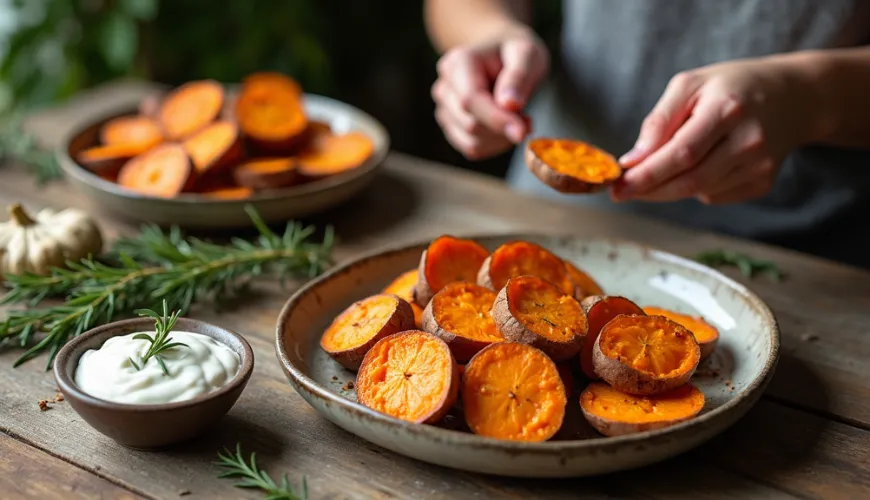
Recipes for an Anti-Yeast Diet for the Body and Taste Buds

Anti-Yeast Diet in Practice - Recipes That Help and Taste Good
An overgrowth of yeast in the body, especially Candida albicans, can unpleasantly affect daily life. Fatigue, bloating, recurrent infections, cravings for sweets, or skin problems – these can all be symptoms of an imbalanced gut microbiota. In such cases, an anti-yeast diet can play an important role by starving the yeast and restoring natural harmony in the body. But what to eat when sugars, regular bread, and fruits are off-limits?
Fortunately, there are plenty of tasty and simple recipes that adhere to the principles of the anti-yeast diet while still keeping your meals diverse. In this article, we'll explore how the anti-yeast diet looks in practice and offer specific recipes that will help you navigate this period without unnecessary deprivation.
What Does an Anti-Yeast Diet Actually Mean?
The foundation of this diet is to limit the intake of simple sugars and foods that can promote yeast growth. This includes white flour, bread, sweets, alcohol, and often certain types of fruit or yeast products. Conversely, it is recommended to increase the intake of vegetables, quality proteins, healthy fats, and fermented foods that help restore balance in the gut.
Many people worry that such a strict diet means boring and monotonous meals. However, as practical experiences show, with a bit of creativity, you can create varied meals full of flavor that also contribute to health. The key is to understand the principles of the diet and have verified recipes on hand that don't require exotic ingredients and can be incorporated into your daily routine.
Basics of a Sugar-Free and Yeast-Free Kitchen
When putting together your menu, it definitely pays off to look for foods with a low glycemic index – simply put, those that do not cause rollercoaster blood sugar spikes. It's good to choose vegetables that grow above ground – such as leafy greens, broccoli, zucchini, or cauliflower, because not only are they full of fiber and vitamins, but they also fill you up nicely. When it comes to proteins, it's definitely worth preferring quality sources – namely fresh meats, fish, or eggs, ideally from chickens that have at least seen the sun sometimes. Legumes also have their place here, just don't overdo it – lentils or chickpeas once in a while, why not.
You can cleverly incorporate seeds, nuts, or coconut in various forms into your diet – perhaps in yogurt, smoothies, or just as a snack. As for side dishes, you don't have to give them up entirely, just choose gluten-free alternatives like buckwheat, quinoa, or amaranth – but be cautious and moderate. It's great to use healthy oils for cooking – coconut, olive, or avocado oil, because they are stable and friendly to the body. And if you want to add some flair to your meals while doing something good for your gut, try fermented goodies – like sauerkraut or kimchi, but without added sugar. It's all about a balanced approach, comfort on the plate, and a bit of curiosity in the kitchen.
On the contrary, you should avoid not only regular sugar but also honey, agave syrup, sweetened beverages, yeast, beer, wine, and industrially processed products. From fruits, it is recommended to minimize sweet types and prioritize sour fruits like lemon, lime, or cranberries – and very cautiously in the first weeks.
Recipes Suitable for an Anti-Yeast Diet
Finding anti-yeast recipes that are not only healthy but also tasty can initially be a challenge. Thus, we bring you several proven dishes suitable for lunch, breakfast, or a quick dinner.
Cauliflower "Rice" with Vegetables and Tempeh
This recipe is a winner for anyone looking for a light, nutritious, yet filling meal.
Ingredients:
- 1 small cauliflower
- 1 carrot
- 1 zucchini
- 1 onion
- 2 garlic cloves
- 100 g tempeh (natural, unsweetened)
- A tablespoon of coconut or sesame oil
- Tamari sauce (sugar-free and gluten-free)
- Fresh coriander or parsley
Instructions:
Finely chop the cauliflower to resemble the texture of rice. Sauté the onion with garlic in a pan, add grated carrot, zucchini, and cauliflower rice. Add diced tempeh and sauté for about 10 minutes. Season with tamari sauce and sprinkle with fresh herbs on the plate.
Chia Pudding with Coconut Milk and Cinnamon
Although fruit is limited in the anti-yeast diet, you don't need to completely give up sweet flavors. This quick recipe is great as breakfast or a snack.
Ingredients:
- 200 ml coconut milk (without added sugar)
- 3 tablespoons of chia seeds
- Vanilla, cinnamon
- A pinch of salt
- A bit of lemon juice or a few cranberries for garnish
Instructions:
Mix all the ingredients and let them soak for at least 4 hours (preferably overnight) in the fridge. Serve chilled, sprinkled with cinnamon, and garnished with sour fruit.
Baked Sweet Potatoes with Garlic Dip from Coconut Yogurt
Gluten-free, filling, and excellent as a side dish or light dinner.
Ingredients:
- 2 sweet potatoes
- Olive oil
- Salt, rosemary
For the dip:
- 100 g coconut yogurt (unsweetened)
- 1 garlic clove
- A teaspoon of lemon juice
- Salt, pepper
Instructions:
Cut the sweet potatoes into wedges, brush with olive oil, salt, and sprinkle with rosemary. Bake in the oven at 200 °C for about 30 minutes. Meanwhile, mix all the ingredients for the dip. Serve warm.
Anti-Yeast Diet in Real Life
The anti-yeast diet is not just a temporary regime – many people realize that this way of eating suits them long-term. It's not about starving but about consciously choosing foods that benefit the body. As nutrition expert Margit Slimáková says: "The foundation of health is a return to natural food – as minimally processed as possible and as close to what our bodies have remembered for generations."
For instance, Lucie, an accountant from Brno, tried the anti-yeast diet after suffering from recurrent gynecological infections. She found the beginnings challenging – she missed sweet breakfasts the most. But after two weeks, she noticed a significant decrease in fatigue, and after a month, she didn't feel the need to return to old habits. Today, she prepares breakfasts from coconut yogurt, fermented vegetables, and buckwheat pancakes. She says that not only has her digestion improved, but she also feels greater clarity in her thinking.
Long-Term Benefits and Sustainable Approach
Not everyone needs to follow an anti-yeast diet for life, but transitioning to less processed and natural foods is beneficial for most people. Gradually incorporating fermented products, reducing sugar, and regular meals help not only with candidiasis but also with digestive issues, eczema, or fatigue.
Looking for more inspiration, whom to trust? Books like "Gut: The Inside Story of Our Body's Most Underrated Organ" by Giulia Enders, or websites like ZijemeDetoxem.cz or CelostniMedicina.cz offer verified information and recipes compiled by experts. And the Czech e-shop Ferwer, focused on a healthy lifestyle, offers ingredients suitable for this type of diet – from coconut products to sugar-free fermented goodies.
Ultimately, the anti-yeast diet is not just about elimination but about discovering new flavors and approaches to eating. And when one learns to listen to what their body really needs, the path to health becomes much easier.

